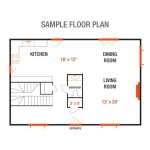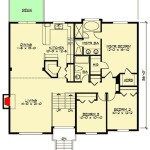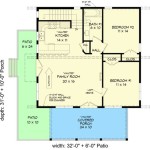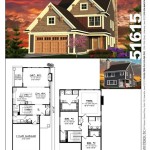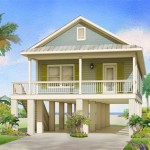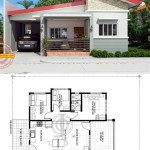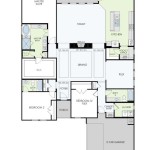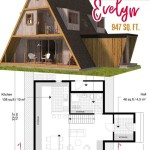Coastal House Plans On Pilings: Elevating Resilience and Aesthetics
Coastal living presents unique architectural challenges. The allure of ocean views and proximity to the water's edge often comes with inherent risks, including flooding, storm surges, and soil instability. A common and effective solution to mitigate these risks is the construction of coastal homes on pilings. This architectural approach, characterized by elevating the structure above ground level using vertical supports, offers numerous advantages in terms of structural integrity, environmental adaptation, and aesthetic appeal. Coastal house plans on pilings can provide enhanced protection against the elements while also offering design flexibility and opportunities to maximize views.
The foundation of a coastal home is a critical component in ensuring its longevity and resistance to environmental stressors. Traditional slab-on-grade foundations can be particularly vulnerable in coastal areas, as they are susceptible to inundation during floods and storm surges. The corrosive nature of saltwater can also accelerate the deterioration of concrete and reinforcing steel. By elevating the structure on pilings, the habitable areas are lifted above the potential flood zone, reducing the risk of water damage and associated mold growth. This approach also allows for the free flow of water and debris beneath the house, minimizing the impact of wave action and reducing the potential for erosion around the foundation.
Coastal house plans on pilings encompass a wide range of architectural styles and design considerations. From traditional beach cottages to modern, contemporary residences, this foundation approach can be adapted to suit various aesthetic preferences and functional requirements. The elevated design often allows for the incorporation of features such as ground-level parking, storage areas, and recreational spaces, maximizing the usable area within the property. Moreover, the elevated vantage point provides improved views of the surrounding landscape, enhancing the overall living experience.
Key Considerations for Coastal House Plans on Pilings:
Successfully implementing a coastal house plan on pilings requires careful consideration of several key factors. These include site-specific conditions, local building codes and regulations, foundation design, and the selection of appropriate materials. A thorough understanding of these aspects is essential to ensure the structural integrity, safety, and longevity of the home.
Site Assessment and Environmental Factors
A comprehensive site assessment is the initial step in planning a coastal house on pilings. This assessment should evaluate the soil conditions, flood risk, wind loads, and wave action at the specific location. Soil testing is crucial to determine the bearing capacity and stability of the ground, as this will influence the design and depth of the pilings. Floodplain maps, provided by agencies such as FEMA (Federal Emergency Management Agency), are essential for determining the base flood elevation (BFE), which is the anticipated height of floodwaters during a base flood event. The house must be elevated above the BFE to comply with building codes and minimize flood damage. Wind loads are another critical consideration, as coastal areas are often exposed to high winds during storms. The house design must be able to withstand these winds, and the pilings must be adequately anchored to resist uplift forces. Wave action can also exert significant pressure on the structure, particularly during storm surges. The design should account for potential wave impacts and ensure that the pilings are properly protected.
Environmental factors, such as the presence of wetlands or endangered species, must also be considered during the site assessment. Construction activities in coastal areas are often subject to strict environmental regulations to protect sensitive ecosystems. It is important to consult with local authorities and obtain the necessary permits before commencing any work. Sustainable building practices can also help to minimize the environmental impact of the construction process. This may include using recycled materials, implementing erosion control measures, and preserving existing vegetation.
Foundation Design and Piling Selection
The foundation design is a critical element of a coastal house plan on pilings. The design must take into account the soil conditions, flood risk, wind loads, wave action, and the overall weight of the structure. A qualified structural engineer should be involved in the design process to ensure that the foundation is adequate to withstand these forces. The pilings themselves can be made from various materials, including wood, concrete, and steel. The choice of material will depend on the site conditions, budget considerations, and aesthetic preferences. Wood pilings, typically treated with preservatives to prevent rot and decay, are a common choice for smaller coastal homes. Concrete pilings offer greater strength and durability and are often used for larger structures or in areas with high wave action. Steel pilings provide exceptional strength and resistance to corrosion but can be more expensive than other options.
The depth and spacing of the pilings are crucial for ensuring the stability of the foundation. The pilings must be driven deep enough into the ground to reach a stable bearing stratum, which is a layer of soil or rock that can support the weight of the structure. The spacing of the pilings will depend on the load distribution and the span of the supporting beams. The pilings are typically connected by a system of beams and bracing, which distribute the load evenly and provide lateral support. The connections between the pilings, beams, and bracing must be carefully designed to withstand the forces of wind and waves.
In some cases, helical piles may be used instead of traditional driven pilings. Helical piles are steel shafts with helical bearing plates that are screwed into the ground. They offer several advantages over driven pilings, including reduced noise and vibration during installation, the ability to be installed in tight spaces, and the ability to be load-tested immediately after installation. Helical piles are often used in areas with unstable soil or where driven pilings would be difficult to install.
Building Codes and Regulations
Coastal construction is subject to stringent building codes and regulations designed to protect life, property, and the environment. These codes and regulations vary from jurisdiction to jurisdiction but typically address issues such as flood resistance, wind resistance, seismic design, and environmental protection. It is essential to consult with local building officials and obtain the necessary permits before commencing any construction. Floodplain regulations are particularly important in coastal areas. These regulations typically require that the lowest floor of a building be elevated above the base flood elevation (BFE) and that the building be designed to withstand flood forces. Some jurisdictions may also require the use of flood-resistant materials for construction below the BFE.
Wind resistance is another critical consideration in coastal construction. Building codes typically specify wind load requirements based on the location and exposure of the property. The house design must be able to withstand these wind loads, and the structural connections must be properly designed to prevent failure. Seismic design is also important in some coastal areas, particularly those prone to earthquakes. Building codes typically require that structures be designed to resist seismic forces, and that the foundation and structural connections be reinforced to prevent collapse during an earthquake.
Environmental regulations may also impact coastal construction projects. These regulations may address issues such as wetlands protection, stormwater management, erosion control, and the protection of endangered species. It is important to comply with all applicable environmental regulations to avoid fines and penalties.
Aesthetic and Functional Considerations
While structural resilience and code compliance are paramount, coastal house plans on pilings also offer opportunities to enhance the aesthetic appeal and functionality of the home. The elevated design can create unique architectural features, maximize views, and provide additional usable space. Careful consideration of these aspects can result in a home that is not only safe and durable but also beautiful and functional.
The elevated vantage point afforded by a piling foundation can provide panoramic views of the surrounding landscape, including the ocean, beaches, and dunes. Large windows and open floor plans can be incorporated into the design to maximize these views. Decks and balconies can also be added to provide outdoor living spaces that take advantage of the elevated location. The space beneath the house can be used for a variety of purposes, such as parking, storage, or recreational areas. This can be particularly useful in areas where space is limited. The elevated design can also create a sense of privacy, as the house is elevated above the ground level.
The architectural style of a coastal house on pilings can be adapted to suit various preferences. Traditional beach cottages often feature wood siding, shingle roofs, and large porches. Modern coastal homes may incorporate clean lines, expansive glass, and durable materials such as concrete and steel. The use of natural materials, such as wood and stone, can help to blend the house with the surrounding landscape. The color palette can also be chosen to complement the coastal environment. Light, airy colors can create a sense of openness and reflect the sunlight. Darker colors can provide a more dramatic and contemporary look.
Material Selection for Coastal Environments
The selection of appropriate materials is crucial for ensuring the longevity and durability of a coastal house on pilings. Coastal environments are characterized by high humidity, saltwater exposure, and strong winds, all of which can accelerate the deterioration of building materials. Materials that are resistant to corrosion, moisture, and UV degradation are essential for withstanding these harsh conditions.
For exterior siding, options such as fiber cement, vinyl siding, and pressure-treated wood are commonly used. Fiber cement is a durable and low-maintenance material that is resistant to rot, insects, and fire. Vinyl siding is another affordable and low-maintenance option that is available in a variety of colors and styles. Pressure-treated wood is a natural material that is resistant to decay and insects, but it requires regular maintenance to prevent weathering. For roofing, materials such as asphalt shingles, metal roofing, and tile roofing are popular choices. Asphalt shingles are an affordable and widely available option, but they have a shorter lifespan than other materials. Metal roofing is a durable and long-lasting option that is resistant to fire and wind. Tile roofing is a traditional material that is both beautiful and long-lasting, but it can be more expensive than other options.
For windows and doors, materials such as vinyl, fiberglass, and aluminum are commonly used. Vinyl windows and doors are affordable and low-maintenance, but they may not be as strong as other options. Fiberglass windows and doors are strong, durable, and energy-efficient. Aluminum windows and doors are lightweight and corrosion-resistant, but they can be more expensive than other options. It's important to select impact-resistant windows and doors in areas prone to hurricanes or strong storms.

Beach House Plans Coastal Home Great Design

Plan 44026td Classic Florida Er Beach House Plans Coastal

Bertrand Cottage Coastal House Plans From Home

Beach House Plans Coastal Home On Stilts

Socal Coastal House Plans From Home

Beach House Plans Archives From Home Designs

Casual Informal And Relaxed Define Coastal House Plans

House Design Plan Ch539 3 Stilt Plans On Stilts Carriage

Elevated Piling And Stilt House Plans Coastal From Home

Beach House Plans Archives From Home Designs

